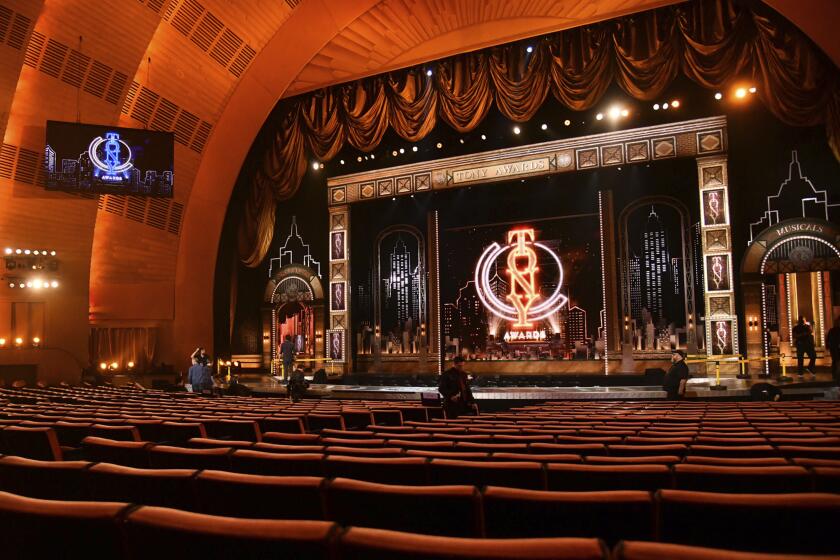ART REVIEW : STACCIOLI’S WORK FITS SNUGLY INTO ITS SETTING
- Share via
LA JOLLA — The site-specific sculptures of Mauro Staccioli now on view at the La Jolla Museum of Contemporary Art are impressive and memorable. They are made so cunningly that they seem appropriate and complementary to rather than imposed upon their environments.
As an artist working in three dimensions, Staccioli practices what he calls “scultura-intervento,” or a sculpture of intervention. To enhance a site, either landscape or architectural, he develops large, reductive sculptures.
The Italian sculptor’s works have excited much analysis and favorable commentary among European critics, and Staccioli is a careful expositor of his own ideas. The intellectual justifications for his works are sophisticated; nevertheless, they are ancillary to the reasons of the senses. Physical beauty is the cause and justification for their being.
Staccioli is a sensualist who has said of his art: “The plastic object is not an end in itself, but rather a component of the site, of its extension and aesthetic dimension. To interpret a place or a context is in fact to think in terms of expansion--from the concrete specificity of the place, to the whole environment; from the present, to the dynamic action of time. . . . To act as a sculptor means being in a place and owning it, feeling it on oneself like the warm nakedness of a body.”
Although working in a reductive mode of expression, Staccioli is no purist in the tradition of Carl Andre and Richard Serra, whose works give visual evidence of the force of gravity. Staccioli’s works seem to float and even soar like baroque sculptures, neither defying gravity nor disregarding it--but using it as one kind of energy among several kinds available to the artist.
Nor is he a conceptual purist like Sol LeWitt and Donald Judd, who have developed ideas and specifications for their sculptures but have had them expertly fabricated by others. Staccioli uses assistants, but he participates with them in making his works, whose pigmented concrete surfaces on a steel and wood armature reveal a human touch.
In a loose exercise of symmetry, Staccioli has placed terra-cotta-colored works on the exterior street and ocean sides of the museum and charcoal gray works in the adjoining, interior, Gordon Gray and Inez and Grant Parker galleries.
Piercing the portico at the front of the museum is a large wedge that seems to refer to a preferred path of entry to the building. Although it points downward, it lifts upward as well, its red against the La Jolla sky recalling “La Danse” of Henri Matisse.
Staccioli repeats the soaring feeling in the museum lobby with a gray vertical sculpture en pointe, spanning the space between floor and ceiling. The slender form composed of distorted linear planes holds the space as a focus of balletic balance rather than as an aggressively dominating presence.
A long, distorted arc controls the Parker Gallery through its impressive dimensions and diagonal position. Although linear, it is not a regular geometric shape but subtly curved (generally resembling a melon slice). Its north point, touching the gallery ceiling, seems to hold the work in place, inhibiting it from rocking and functioning as a pivot for imagined rotation.
Finally, outside and seemingly precariously balanced on the oceanside wall of the museum’s west terrace is a large wedge that variously resembles a structure for hang gliding or surfing. The crash of waves just yards away enhances the visual effect. From wherever you look, its contours relate to those of the environment--the street, a stone wall, the museum building. It is a quiet but potent presence.
An illustrated brochure with an essay by assistant curator Madeleine Grynsztejn will soon be available.
The exhibition continues through April 5.
More to Read
The biggest entertainment stories
Get our big stories about Hollywood, film, television, music, arts, culture and more right in your inbox as soon as they publish.
You may occasionally receive promotional content from the Los Angeles Times.










